India and the World : Sri Lanka – a neighbour close to our hearts!
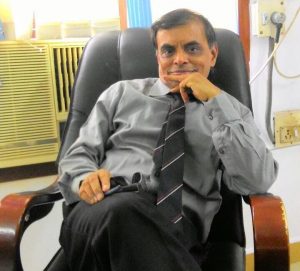
Baskaran Krishnamurthy
“We cherish our friendship with Ceylon and it is our earnest hope that the bonds of unity will become stronger in future and that we will try to be helpful to each other.
Our thinking on many vital problems in the international field has been common and we have worked together in cooperation in the United Nations and other international gatherings.
I must admit that we are passing through a most difficult period in international relations and we have to act wisely and as far as possible in cooperation with each other.”
(Speech of Lal Bahadur Shastri in honour of Smt Sirimao Bandarnaike, Prime Minister of Ceylon in New Delhi on Oct 22, 1964.)
India and Sri Lanka have been good neighbors for centuries together. It is said historically that Mahinda , the son of Emperor Ashoka carried Buddhism to the people of ‘Ceylon’ in 400 B.C. and as a result, Sri Lanka today is predominantly a Buddhist nation. The religious, cultural and political ties between India and Sri Lanka thus date back to more than 2000 years making it one of the most ancient relations in the international arena.
India never had any serious issue with Sri Lanka and as Lal Bahadur Shastri put it in his speech, “we have a small problem between our two countries and both of us believe that it should be possible to settle it.” But, what was a ‘small problem’ in 1964 took enormous proportions and turned out to be a massive one in the next 2 decades or so and it proved to be disastrous to the Tamil race in Sri Lanka.
Originally, it was not India and Sri Lanka but Tamilnadu and Sri Lanka who were good neighbors. Yes. The relations with Sri Lanka have been more ‘local’ than international. To a certain extent, we can liken it to the relations between West Bengal – Bangladesh.
Till a few years ago, it was nothing more than a routine for the Tamils to cross over the ocean to Sri Lanka for visiting the temples, shopping for a while and watching a just released Tamil movie. Many youngsters would in fact take a boat in the evening, watch a night show in Sri Lanka and come back home for late night sleep. People of south coastal districts of Tamil Nadu found it much easier to go to a Sri Lankan town rather than coming all the way to ‘Madras’.
In 1960s and 70s, Sri Lankan Radio was most popular and K.S.Raja, Abdul Hameed and Mayilvahanan were household names in Tamil Nadu. All the programs of Sri Lankan Radio were very popular and its special program ranking the top 10 Tamil film songs was almost a rage. Songs like ‘surangani..’ ‘maam poove.. siru mainaave..’ became hits because of Radio Ceylone. Those were the most pleasant days and our relations with Ceylon were truly cordial and basically concrete. It was more like a connection between two Indian states rather than between two sovereign nations.
The days of healthier relationship and memories of sweeter inter actions remain etched deeper in the heart of the Tamils who are still not able to come to terms with the present ‘gap’ that can never be filled. It is not Tamil Nadu – Ceylon any more but ‘Indo Sri Lanka’ that needs all the ‘diplomatic channels’ to keep the relations going. That speaks volumes by itself. We at one time had the entire ‘ocean’ to connect us and now we are at the mercy of ‘channels’ to ‘display’ our cordiality.
There remains a grudge in the hearts of millions of Tamil Nadu. There was a war in 1971 in support of Bengalis; there has never been any such for the cause of the Tamils. If India could actively engage in a full-fledged war with Pakistan to help the Bengalis for a just cause, why not the Tamils be helped too?
There was a refugee crisis in the case of Sri Lankan Tamils as well. Many thousands of them managed to somehow escape from the attacks and reach the southern coast of India – read – Tamil Nadu. There were as many similarities as we may list out to establish that the situation was ‘almost’ like what prevailed in 1971 in the case of Bangladesh. But when it was for the Sri Lankan Tamils, nothing really mattered so much as to drive India into a conflict with Sri Lanka to secure the legitimate rights of Tamils living in Sri Lanka for centuries.
While we speak about similarities with the war for Bangladesh, there were undoubtedly two major differences. One was of course, the opponent was Pakistan in 1971 whereas it is Sri Lanka here which is not a hostile country to us by any stretch of imagination. Bangladesh was geographically separated from Pakistan. Moreover Pakistan by its ambitious moves, forced India into a war with it.
Sri Lanka has always maintained good neighborly relations with ‘Delhi’ and hence war with the friendly country was never an option before India. The political proximity of Delhi to Colombo has been much more effective than the geographical closeness and ethical and cultural identities of Tamil Nadu with the Tamil inhabitants of Sri Lanka.
Even today there are not many in Delhi who seem to care to know anything about the Sri Lankan Tamils’ issue. More pathetic is the fact that even the ‘national’ leaders are not ready to spare time to learn more about the demands or the plight of the Sri Lankan Tamils.
When fishermen are caught by Sri Lankan Navy, they are reported to be ‘Tamil fishermen’ and not Indian fishermen. This divide keeps one of the important States of India at distance from the ‘mainstream’.
The absence of a ‘national’ leader in Tamil Nadu makes the situation worse for TN. The encouragement given by MGR, Rajiv Gandhi’s decision to air lift relief materials to Sri Lanka, and subsequent accord in the year 1987… there were some positive developments too. This apart, ‘Delhi’ never displayed the level of seriousness that the Tamils issue deserved.
Though the issue was simmering for the past few decades, it started taking serious turns with the 1974 agreement on ‘Katchatheevu’ signed by Indira Gandhi and Sirimavo Bandaranaike by which the island off Palk Strait was ceded to Sri Lanka.
The Issue was all about the ‘delineation of Indo-Sri Lanka Maritime Boundary Line (IMBL). Katchatheevu lies at a distance of 11Nautical Miles from Rameswaram (India) and 18 N.M. from Thalaimannaar of Sri Lanka. Applying the principle of ‘equi-distance’ in demarcating the areas between two countries, Katchatheevu must have been retained within the boundaries of India. But mysteriously, the 1974 agreement gave away the island to Sri Lanka and the leaders or the people of Tamil Nadu were never consulted or taken into confidence before the accord was to be signed.
‘Agreement between India and Sri Lanka on the boundary in historic waters between the two countries and related matters’ signed in June 1974 has 8 Articles in it with the aim ‘to settle the related matters in a manner which is fair and equitable to both sides’.
Article 1 says “the boundary between India and Sri Lanka in the waters from Adam’s Bridge to Palk Strait shall be arcs of Great Circles between the positions defined by latitude and longitude”.
Articles 2 and 3 authorize the officials / surveyors appointed for the purpose to clearly identify the demarcated areas.
Article 4 reads thus: “Each country shall have sovereignty and exclusive jurisdiction and control over the waters, the islands, the continental shelf and sub-soil thereof, falling on its own side of the aforesaid boundary.
Article 5 explains that “subject to the foregoing, Indian fishermen and pilgrims will enjoy access to visit Katchatheevu as hitherto, and will not be required by Sri Lanka to obtain travel documents or visa for these purposes”. (note the word – ‘foregoing’ which is ‘applicable’ to both countries but till date we do not know what was ‘forgone’ by the ‘other’ side!!!)
Article 6 says that “the vessels of India and Sri Lanka will enjoy in each other’s waters such rights as they have traditionally enjoyed therein”.
Article 7 reads: “If any single structure or field extends across the boundary referred to, the two countries will seek to reach an agreement as to the manner in which the structure or field shall be most effectively exploited and the manner in which the proceeds deriving therefrom shall be apportioned”. (Yes. The agreement uses the word ‘exploited’ though the framers, we believe, did not mean exploitation as such; but meant extraction rather.)
Article 8 is categorical when it says “this agreement shall be subject to ratification. It shall enter into force on the date of exchange of the instruments of ratification which will take place as soon as possible”. This is what keeps the arguments alive. What does the phrase ‘subject to ratification’ mean?
If any area of the Land of India is to be ‘gifted’ or apportioned to a foreign country, it should be approved by the Parliament as the Constitution demands. This has never been done and the necessary Constitutional ratification has not been carried out by India till date. On this ground, many in Tamil Nadu argue that, the ‘transfer’ of Katchatheevu does not have the constitutional sanction and hence it is null and void. If this argument is ‘held’, the agreement stands void ab initio.
Add to this Katchatheevu agreement, there was another one in the year 1976 with regard to other areas of water not covered by the 1974 agreement. This again did not specify clearly whether India had any territorial rights over Katchatheevu.
And, that was the period when the Tamil ‘uprising’ started in Sri Lanka. They launched many movements to assert their rights of Tamils in Sri Lanka. They alleged that Tamils were being discriminated against by the majority Sinhalese and that they started demanding a separate Tamil Nation called ‘Tamil Eelam’. This invited the wrath of the Sri Lankan government and there erupted what was to be called later a ‘racial war’.
A number of organizations for ‘freedom’ of Tamils emerged and some of them took to armed struggle as well. As can be expected, the government of Sri Lanka pulled out all its forces to crush the secessionist movements. Militant outfits employed methods of brutal violence against the Sinhalese administration and this eventually led to a ‘Civil war’.
India had an issue before it. And how good or bad was it handled?
Author – Baskaran Krishnamurthy, Writer, Columnist & Income Tax officer











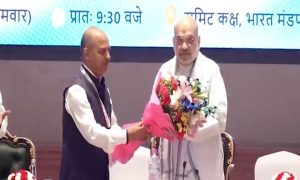

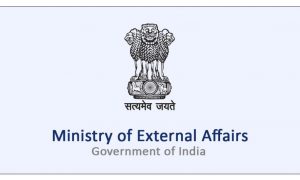

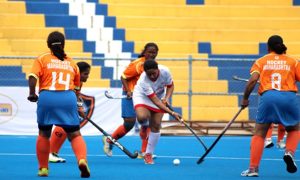



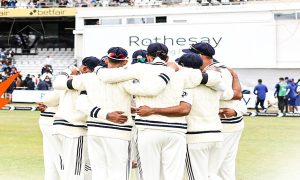

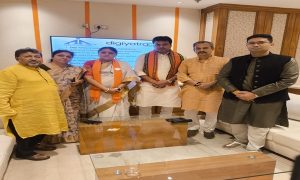





 WhatsApp us
WhatsApp us